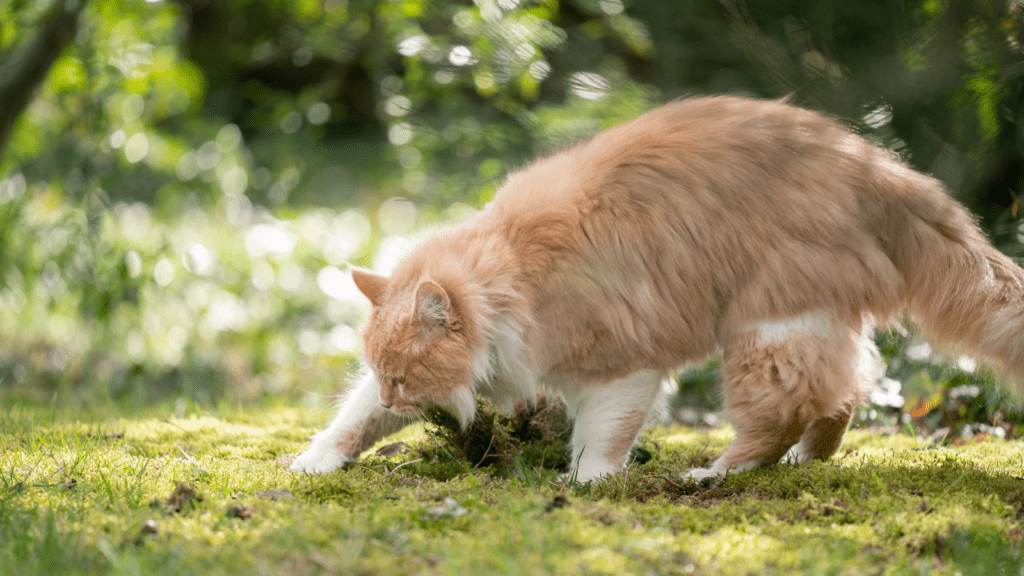
How To Bring An Outdoor Cat Inside
Sometimes an outdoor cat will capture our hearts, so we want to bring them indoors so they can live a long, healthy, and happy life. Three of my cats were outdoor cats that I transitioned to indoor-only, and it was well worth the effort! I also have a feral-to-friendly cat living on my catio as we socialize.
Bringing an outdoor cat inside and keeping them inside may seem daunting, but it’s actually a very rewarding bonding experience. You’ll get to know each other quite well as you go through the transition stages.
The average indoor cat’s lifespan is 10-15 years, while an average outdoor cat’s lifespan is just 2-5 years. Outdoor cats are exposed to parasites, illness, predators, vehicles, and more. Luckily, with a bit of dedication and love, almost every cat can find a forever home indoors.
Here are a few things to consider that will make bringing an outdoor or feral cat inside much easier.
The Difference Between Feral Cats And Stray Cats
All feral cats are stray cats, but not all stray cats are feral. Feral cats are outdoor cats that are unsocialized to humans, while stray cats are usually more domesticated and friendly. Feral cats tend to take longer to bring inside, but the approach is generally the same as for a stray.
Stray cats may have been born outdoors, dumped by a previous owner, or abandoned when a neighbor moved away. If your outdoor cat seems more approachable and reliant on humans for care, then it’s more likely to be a stray.

Bringing A Stray Cat Inside
If your outdoor cat is friendly, it’s usually a good idea to ask around to see if it belongs to anyone. We think all domestic cats should be indoor-only, but there are a lot of indoor-outdoor cats that might have owners.
A stray cat can become an indoor cat with a few simple transition steps.
- Get to know them
- Take them for a Veterinarian check-up
- Bring them inside, into a small space
- Keep them inside
- Introduce them to all family members and pets
- Love them forever!
Bringing A Feral Cat inside
Yes, a feral cat can become an indoor cat. Ideally, you’d go slowly and gradually to allow for the feral to get friendly to you before coming inside. My outdoor feral has been living on my catio for over a year. It took us a few weeks before she was comfortable enough to come near for food. Now, I can pick her up and hold her. She purrs like a little chipmunk, and it’s adorable!
If you don’t have time to socialize your feral, you might need to trap them to get them in the house. If you’re interested in learning how to trap a feral cat to bring inside, check out our TNR Beginners Guide to get started.

If you’re planning to bring a feral cat inside, you might want to prepare a safe outdoor space while you socialize and tame them. If your cat likes to stray, you could consider creating an outdoor catio to keep them close. Otherwise, here are a few outdoor cat shelter ideas.
Taming A Feral Cat
Before you bring a feral cat inside, it’s ideal to begin taming them first. One way to get an outdoor cat to trust you is with food! The first step to taming a feral cat is by feeding them.
Try setting down a dish of food, then backing up until the cat is comfortable eating while you are still there. Each time you feed them, sit a little closer. Stay quiet and don’t make sudden movements, as this can scare the cat and might even set back the progress you’ve made.
Once you can sit close by, try hand-feeding the cat with treats or kibble. You can even put a bit of wet food on a spoon for them to eat.
If the cat doesn’t quite trust you enough yet, you can try gently tossing treats a little ways from you to see how close they’ll come. Over time, this distance will lessen. Here are some of our favorite cat treats which might do the trick.
Once the cat is very comfortable eating around you and takes food from your hand, slowly reach out to pet them. Cats love to be pet on their cheeks, and this can be less scary than letting you scratch the top of their heads. This is also a good time to introduce toys and begin playing with them.
The amount of time this process takes will vary depending on the cat. They’re all individuals with different experiences and personalities. Some will warm up quickly, while others will take months or even years to adapt.
Do Feral Cats Make Good Pets?
Feral cats will become friendly and grow to prefer life indoors if treated right. They make wonderful house pets.
Depending on the age of the feral cat, its personality, and its past experiences with humans, it may never be a lap cat or frequently interact with you.
Once they get used to indoor life, they might still prefer to keep their distance. Cats raised their whole lives indoors sometimes turn out the same way, though, so don’t let this discourage you.
On the other hand, some formal ferals become so lovey and snuggly that you wouldn’t believe they went so long without human contact.
Will An Outdoor Cat Use A Litterbox?
Most cats will use the litterbox naturally because they have the instinct to bury and dig. However, you should avoid leaving other places to bury it in, such as clothes piles or potted plants.
Keeping the cat in a small area at first will help them learn to use a litter box. Outdoor cats tend to prefer unscented wood pellet litter as opposed to other types and scents.
Another issue you may encounter while bringing a cat indoors is spraying urine. Unaltered male cats spray the most, but any cat can spray. Feral cats are more prone to this behavior because they have a natural tendency to mark territory on trees and other upright items.
Spaying or neutering the cat will reduce spraying 90% of the time. If the cat still sprays after this, make sure you clean the spots frequently to get rid of the cat pee smell and talk to your veterinarian about other behavioral or medical solutions.
Keeping An Outdoor Cat Inside
The first few days and weeks of keeping a cat inside are the toughest. Even if your cat is totally comfortable inside and loves its new home, it may still want to go outside, especially when there are familiar smells and sounds.
Cats are nocturnal, and they love to explore at night. Keeping a cat inside at night might make them crazy! Make sure there are plenty of toys, scratchers, cat trees, and hiding places for your cat to play at night.
However, once your cat has been to the vet, tested, and introduced to its new life, it’s important to keep them in the house at all times. Letting them out could allow them to get hurt or catch an infection that might be transmitted to other animals. Also, take it from me. You’ll worry about them all the time while they are gone and if they fail to return.
Keeping cats indoors also helps your local ecosystems. Many people consider cats to be an invasive species that should be removed from certain environments whenever possible.
How To Introduce Two Cats
If your indoor kitty made friends with an outdoor kitty, then you’ll want to unite them! It takes about two weeks for many cats to acclimate to a new environment, so it’s important to make sure your new cat is comfortable with indoor living before meeting your other cat, dog, or other pets.
You can use the two-week timeframe to let the cats smell and hear each other through the door. You can also transfer the bedding and smells of your new cat into the living spaces of your other cats to gradually increase exposure.
Socializing two cats just takes time and patience, especially when you are introducing two cats that are hissing. If they are hissing, separate them, slow down, and focus on fostering positive and controlled interactions.
If your cats are being aggressive and having trouble getting along, check out these tips for introducing two cats.
Are Cats Happier Indoors?
Many people think that cats are naturally supposed to be outside and, therefore, are happier outside. Take it from me, as someone who has seen indoor-only cats, outdoor-only cats, and cats in every stage in between. Most cats are unequivocally happier indoors!
The main exception would be feral cats. Feral cats are not socialized and accustomed to human lifestyles, so they usually don’t do well indoors. Feral cat sanctuaries are one of the only alternatives to community cat colonies, and if you have to take a feral to a shelter, make sure it’s a no-kill shelter.
If you provide your cat with love and environmental enrichment, they will be happier indoors and soon forget their outdoor adventures.
Create A Cat-Friendly Indoor Environment
Creating a cat-friendly indoor environment is key to keeping your indoor cats happy. You can even bring aspects of the great outdoors inside with cat-friendly plants, a sunny window perch, fresh air, freshwater, and lots of fun toys. Cats love a tall cat tree by windows so they can see birds, lizards, and other wildlife.
Cats also love everyday household items like aluminum foil balls and a paper bag, and of course, make sure to there are scratching posts and lots of treats! Scratchers and scratching posts are important for your cat’s health and help to prevent them from scratching the furniture. Never consider declawing your cat, as there are many more ethical solutions.
Conclusion
You are doing a wonderful thing by bringing a stray cat indoors! If you are patient, persistent, and positive, most cats will acclimate to indoor life within a few weeks. Cats can sense your energy, and if you provide enough positive interactions, your kitty will become your new best friend.



